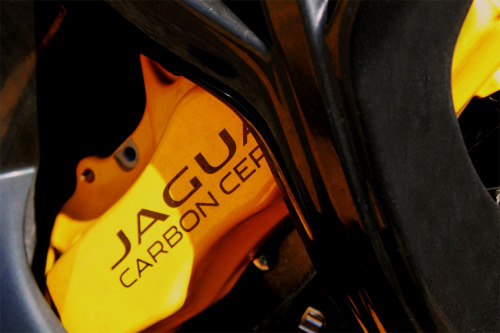#paddock
I love sitting with Paddock
Drinking my beer
Every night he tells me
I have nothing to fear
The sun sets over the town
The screams I begin to hear
I pretend not to notice
But it pulls me there
The sword I do draw
Place on all my gear
BitchslapPaddock
And then disappear
I enter the cemetery gates
I cry for the yesteryear
Slaughter that what moves
Carve from toe to ear
Bathe myself in their flesh
Prophecy of the Seer
Paddock was right?
Nothing to fear
I returned to Familiars
I like the atmoshphere?
Covered in blood and gore
But what did I care?
There was his ugly mug
With a giant sneer
He bitchslapped me and said
“merry christmas and happy new year”
Author:Freebird
Date:Sun Jan 16, 2022
101 news globe
’A Short Disquisition Concerning Toad-lore’

“That remarkable native amphibian, the toad or paddock (Bufo bufo), has a longstanding and celebrated association with witchcraft in the British Isles and Europe, especially as a familiar-spirit. The reasons for the importance of the toad in mediaeval witchlore must ultimately be sought in esoteric folk-symbolism, mythopoetics and the psychopharmacology of rural sorcerers and hexe-wives.
The totemic significance of the toad in witchcraft is primarily due to it’s intimacy with the subterranean marshes, caves and dark waters of Annwvyn. Thus the toad is a dweller in the fens of the underworld and is especiall holy to the chthonic divinities. The toad is equally at home in the waters or on solid land, passing at will from one realm to the other just as the witch-shaman crosses the boundaries between this world and the underworld. The toad, therefore is a shamanic creature, considered symbolically, who epitomises passage between the dimensions. In this respect it should be remembered that in the Celtic world-view, marshy pools and linns were entrance points to the lower world, the great below.
At the initiations of Basque witches new devotees were marked by the Devil or Horned God with the sign of the toad or toad’s foot. In mediaeval lore the heraldic crest of the Devil was held to consist of three toads emblazoned on a shield, affirming the link with the powers of the netherworld. A toad hopping over a person’s foot is an ominous sign of impending death. An old Mantuan name for the toad is ‘fada’ or 'faery’, emphasising it’s otherworldly nature. In the Pyrenees it was said that witches could be recognised by an image of a frog’s foot in their left eye.
The witch-trials particularly highlight the toad’s function as a familiar-spirit. In the Basse-Pyrenees new witches were given toads by the Dark One. At Windsor in 1579 it was reported that "one Mother Dutton dwellyng in Cleworthe Parishe keepeth a Spirite or Feende in the likeness of a Toade, and fedeth the same Feende liyng in a border of greene Hearbes, within her Garden, with blood…..” Similarly in Essex a witch in 1582 was held to own “two spirits like Toades, the one called Tom, and the other Robbyn” which she had inherited from her mother. Seventeenth Century French witches were accused of possessing 'petit Diableteaux’ in the form of toads. The Italian witch Billia la Castagna in 1365 kept a large toad under her bed whose excrement was used in potions. This last detail is very significant as it is actually a cryptic reference to 'toad-stools’ or visionary fungi used in witch-practices, usually of the Fly Agaric species. All across Europe there occur folk-names forcertain mushrooms which link them with toads such as Crapaudin in French.
In Slavic countries inedible mushrooms are called Zabaci Huby - “toad- mushrooms”. The folk-affinities between hallucinatory fungi and toads point to an ancient awareness of the presence of psychotropic toxins in the skin of the latter. Toads secrete a fluid from their skin which contains the indole alkaloid bufotenine. Bufotenine was extracted from the glands of toads in ancient China and the traditional witches of Europe were well-acquainted with the propertiesof this batrachian elixir.
The witch-covens of north-western Spain in the 16th Century used toads’ blood in their flying ointments. In 1525 Maria of Ituren confessed to having concocted a flying-salve from toad-skins and water-plantain, no doubt mingled in an oily base. Swedish witches compounded their salves with toads’ fat and snake-foam along with poisonous herbs. German covens reputedly fried the toads to prepare such ointments and toad-grease salves were also utilised by witches in Hungary and Easter Europe to attain the ecstasy of 'spirit-flight’.
The toad is also famous for bearing within his head the Toadstone, a magical gem which healed all bites and stings and which, when set in a ring, grew paler in the presence of poison. In 'As you Like It’ Shakespeare makes his well known reference to the Toadstone:- “the toad, ugly and venomous, wears yet a precious jewel in his head”.
This casts light on the emblem of the Black Toad in later Hermetic/alchemical literature as a glyph representing the 'earth of the philosophers’ or 'first matter’ which conceals within itself the wondrous Stone of the Wise.
In rural regions of England, such as Cambridgeshire, there operated a secret guild of men called the Toadmen who were reputed to exert a magical influence over horses. The Toadmen, like the secret society of the Horseman’s Word, preserved many of the mysteries of the masculine side of the Craft of the Wise, honouring Old Hornie as the Master of the Beasts. To become a Toadman and gain the power a certain bone had to be obtained from a toad which was fixed to an anthill until the skeleton was entirely clean and devoid of flesh. The initiate then carried the bones in a pocket until they dried. On the stroke of midnight on the night of the full moon he cast the skeleton into a running stream: one bone would screech as it separated and floated downstream and this, when secured, conferred the supernatural powers of the Toadmen upon the bearer. Sometimes the new initiate had to take the bone to a stable or graveyard for three consecutive nights on the third night the Devil (Horned God) would appear and make a last attempt to trick the Toadman into parting with his bone as the final test of his shamanic initiation. According to some reports Charles Walton who was foully murdered in Lower Quinton, Warwickshire in 1945, was reputed by villagers to breed natterjack toads and use them in his magic - his garden was apparently thickly populated by them at the time of his death.
Toadmen were known to be practising their arts in Cambridgeshire as late as 1938 and it is not impossible that the cult may have survived clandestinely into the present day under a close shroud of rural secrecy. The toad’s fertility aspects are to be clearly seen in the practices of the Auldearne coven in 1662 who performed a curious ceremony in which toads drew a plough made from the horn of a castrated ram with couch-grass for the harness. The coven went several times round a field with the toads 'praying to the Devil for the fruit of that land’. This seems to be a fragment of an ancient geomantic ritual to enhance telluric fertility. The classical author Pliny described how a toad should be placed in an earthenware pot and buried in a field to magically protect the crops from storms.
The Slavonic vampyre could appear in the guise of a frog and the paddock features heavily in [Romani] lore and tradition as a form of the Devil whose [Romani] name, Beng means “frog-like”. In Transylvanian [Romani] mythology the Queen of the Faeries lives in her remote mountain castle in the shape of a golden toad.
The recondite arcanae of toad-lore can be seen to illuminate the moste esoteric recesses of the Craft of the Wise as one of it’s cardinal totemic symbols. It is thus fitting that the contemporary seeker again learns the marshland lore of the paddock as the People of the Toad did in times
past. It would seem prudent to hearken once again to his oracular croaking amidst the reeds at twilight and to pay heed to the chthonic wisdom from the haunted fens of Andumnos.“
—
Call of the Horned Piper
by Nigel Aldrcroft Jackson





























































